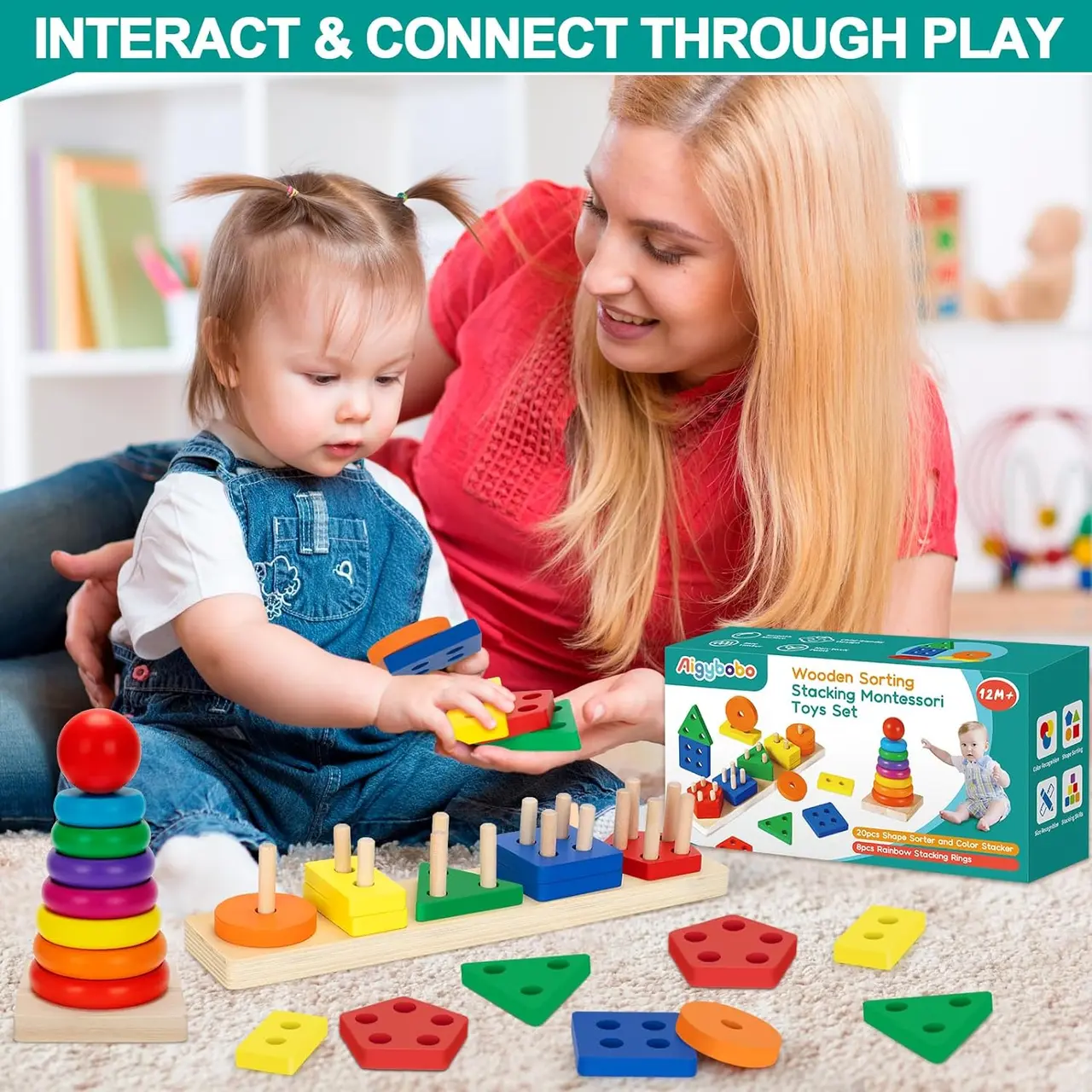Introduction to Infant Learning Toys and Early Child Development
Infant learning toys are not just toys; they're key tools that play a pivotal role in a baby's early development. These toys are designed to do more than just amuse; they stimulate the mind, help with coordination, and encourage the baby's curiosity. From the moment a child enters this world, every sight, sound, and touch becomes a learning experience. This is where learning toys come in – they create an environment ripe for learning while making sure the baby gets to have fun. Have you ever noticed how babies seem to gravitate toward brightly colored objects or get excited by toys that make noise? That's because these features are designed to grab their attention and turn playtime into an educational moment. Whether it's a soft toy that encourages cuddling and comfort or a set of blocks that teaches about shapes and problem-solving, every learning toy is meant to help develop essential skills in infants such as fine motor skills, sensory awareness, and cognitive abilities. Remember, the key is not just to give kids the toys, but also to interact with them as they play—it’s that engagement that truly catalyzes development.

The Science Behind How Infant Learning Toys Can Boost Development
Toys are more than just playthings; they’re tools that help infants learn about the world around them. As parents and caregivers, choosing toys that stimulate growth and development is important. Research shows that interactive toys, like those with buttons, sounds, and different textures, help babies develop their senses and motor skills. These toys can encourage little ones to reach, grasp, and explore, which is crucial during their first months of life. The bright colors and varying shapes of toys also work to improve vision and cognitive abilities, as babies start to understand cause and effect. For instance, when a baby shakes a rattle and hears the sound it makes, they begin to learn about predictable outcomes. Ensuring age-appropriate toys can provide the right amount of challenge without causing frustration. This delicate balance can foster a joy of learning and curiosity that serves well beyond infancy.

Key Types of Infant Learning Toys for Different Developmental Stages
Toys aren't just for fun—they're tools that help with infants' growth. For newborns to about three months, go for high-contrast, black-and-white toys or mobiles; they're perfect because infants at this stage only see that far. From three to six months, try toys that make noise or have different textures to touch—they start grabbing and shaking things. When they hit six to nine months, they'll be all about exploring, so offer toys they can drop or stack. Finally, from nine to twelve months, it's great to introduce more active toys—think push-pull toys for crawling and walking practice. Remember, every child is unique, so they'll reach these stages at their own pace.
Cognitive Benefits of Infant Learning Toys
Infant learning toys are more than just playthings. They're brain boosters, helping little ones make sense of their world. These toys get the gears turning in a child's mind, paving the way for problem-solving and basic logic skills. Let's take shape sorters, for example. They teach babies how to match similar items, a building block for recognizing patterns. Another brainy pick is puzzling. As infants figure out where each piece fits, they're prepping for math by understanding spatial relationships. Colorful rattles aren't just fun to shake; they develop color recognition, a milestone in cognitive growth. So when you hand your baby a learning toy, you're giving them more than just entertainment. You're igniting a spark of learning that'll burn bright as they grow.

Motor Skills Development Through Infant Learning Toys
Toys are more than just playthings; they're tools that help infants develop essential motor skills. Think of them as the gym equipment for the tiny muscles. When babies grasp, stack, or push toys, they're doing serious work on their coordination and muscle strength. Simple toys like soft blocks or squeeze toys can give their little fingers a full workout. As they grow, more complex toys like shape sorters or building blocks challenge both their fine and gross motor skills. This means toys not only entertain but also arm children with the necessary physical abilities to explore and interact with their world.
Sensory Stimulation with Learning Toys for Infants
Babies learn a ton from the world around them, and their toys are no exception. Sensory stimulation plays a big role in infant development, and the right toys can make all the difference. These toys light up, make noise, or have different textures to catch a baby's attention and engage their senses. Through touch, sound, and sight, they start to understand how things work. This kind of learning is key and helps them with things like motor skills—think grabbing and shaking—and can pave the way to more complex skills down the road. It's not just about keeping them occupied; it's about giving them the tools to explore their world.
Emotional and Social Learning through Play
Playtime isn't just fun; it's the core of childhood development. Squeezing a soft toy can help a little one manage emotions while sharing blocks teaches about cooperation. Toys like dolls and stuffed animals serve as 'friends' for toddlers to practice empathy and understanding feelings. As kids act out scenes with their toys, they learn to navigate social situations and develop emotional intelligence. By playing with others, kids learn give-and-take, an essential part of forming relationships. Making friends, even if they're plush, sets the stage for real-world social interaction.

Choosing the Right Infant Learning Toys: Safety and Age Appropriateness
When picking out toys for little ones, safety is the top priority. Check for non-toxic materials and make sure there are no small parts that can become choking hazards. The right toy should match your baby's developmental stage. For newborns to six-month-olds, choose toys they can grasp, shake, or make noise with, like soft rattles or squeeze toys. From six to twelve months, babies start solving problems, so toys like simple puzzles or blocks are great. Look for toys that will help them learn cause and effect, like balls that roll when pushed. Remember, the best toys are the ones that are not only safe but also spark your child's interest and match their current abilities.
Integrating Infant Learning Toys into Daily Routines
Incorporating learning toys into your baby's day is simple and does wonders for their development. For starters, during tummy time, you can place colorful toys within their reach to motivate them to lift their head and strengthen neck muscles. Then, as you engage in play, chat with your baby. Describe the toy, its colors, and what it does. Grab a soft, crinkly book or a rattle and create fun, stimulating experiences. During bath time, waterproof toys can make it a prime time for sensory play. Remember, the key to integrating learning toys is about making every moment an opportunity to encourage exploration and growth. Keep it fun, keep it regular, and watch your little one thrive.
Conclusion: Enhancing Child Development with the Right Toys
Finding the right toys for your little one can make a world of difference in their early development. By choosing toys that encourage the growth of cognitive and motor skills, you're setting the stage for a lifetime of learning. Remember, it's not about flooding playtime with heaps of toys but selecting those that foster creativity, problem-solving, and social interaction. Quality beats quantity. opts for toys that challenge your child just enough to keep them engaged, without causing frustration. And most importantly, play along! Your participation amplifies the benefits, as you guide, teach, and nurture their curiosity.azed. Always check safety ratings and steer clear of small parts if your child is still in the put-everything-in-the-mouth stage. With the right approach, your child's playtime can become a foundation for a bright, well-rounded future.


